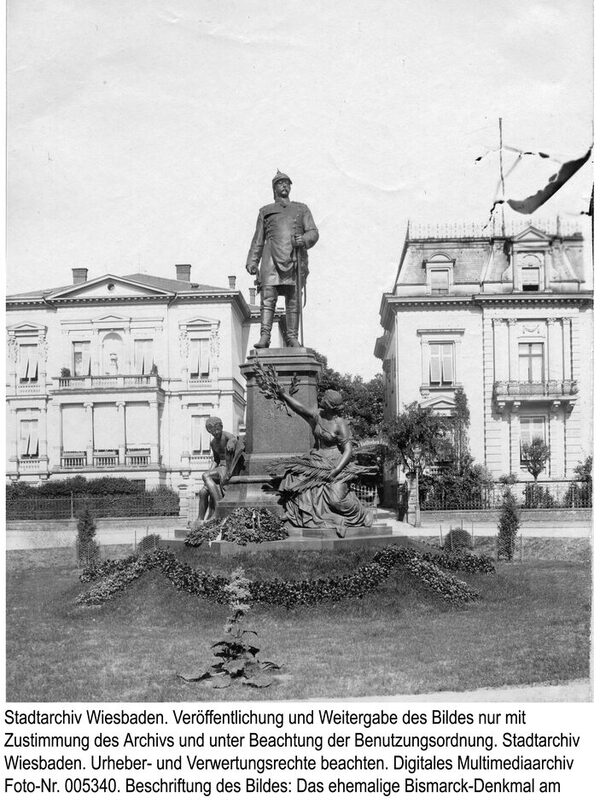Bismarck Monument
The Bismarck monument, today in the Nero Valley park, was created by Prof. Ernst Gustav Herter (1846-1917), a member of the Berlin Academy of Art.
The larger-than-life bronze sculpture shows the "Iron Chancellor", Prince Otto von Bismarck (1815-1898), Chancellor of the North German Confederation and first Chancellor of the German Empire, in the interim dress of the Halberstadt cuirassiers in long riding boots, with the matching helmet with peak, the so-called Pickelhaube, on his head with the neck visor pulled down low.
The pedestal and the steps leading up to it were decorated on the right side with a female figure, Nassovia, holding up a laurel wreath and symbolizing the homage of the Nassau people, while on the left side sat a youth as a symbol of German youth. The imperial insignia, crown, sceptre and sword, protected by a Prussian eagle, were also part of the monument's accompanying ornamentation.
The monument was erected after Bismarck's death on October 9, 1898 in the middle of the former Wilhelmsplatz, which was later renamed Bismarckplatz. In 1966, Bierstadter Straße was brought closer to Wilhelmstraße for traffic reasons, which resulted in the removal of Bismarckplatz. The Bismarck monument was moved to the Nero Valley. The two figures accompanying the monument, the Nassovia and the youth, disappeared during this process.
It was not until 1991 that the Gesellschaft für Stadtgeschichte, Mattiaca, discovered that the two figures had been sold and melted down by the state capital of Wiesbaden in 1969 for the scrap price of DM 3,650. The imperial insignia that adorned the monument in its original form are now in the Nassau Antiquities Collection.
Literature
Buchholz, Kurt: Wiesbadener Denkmäler, Wiesbaden 2004.
